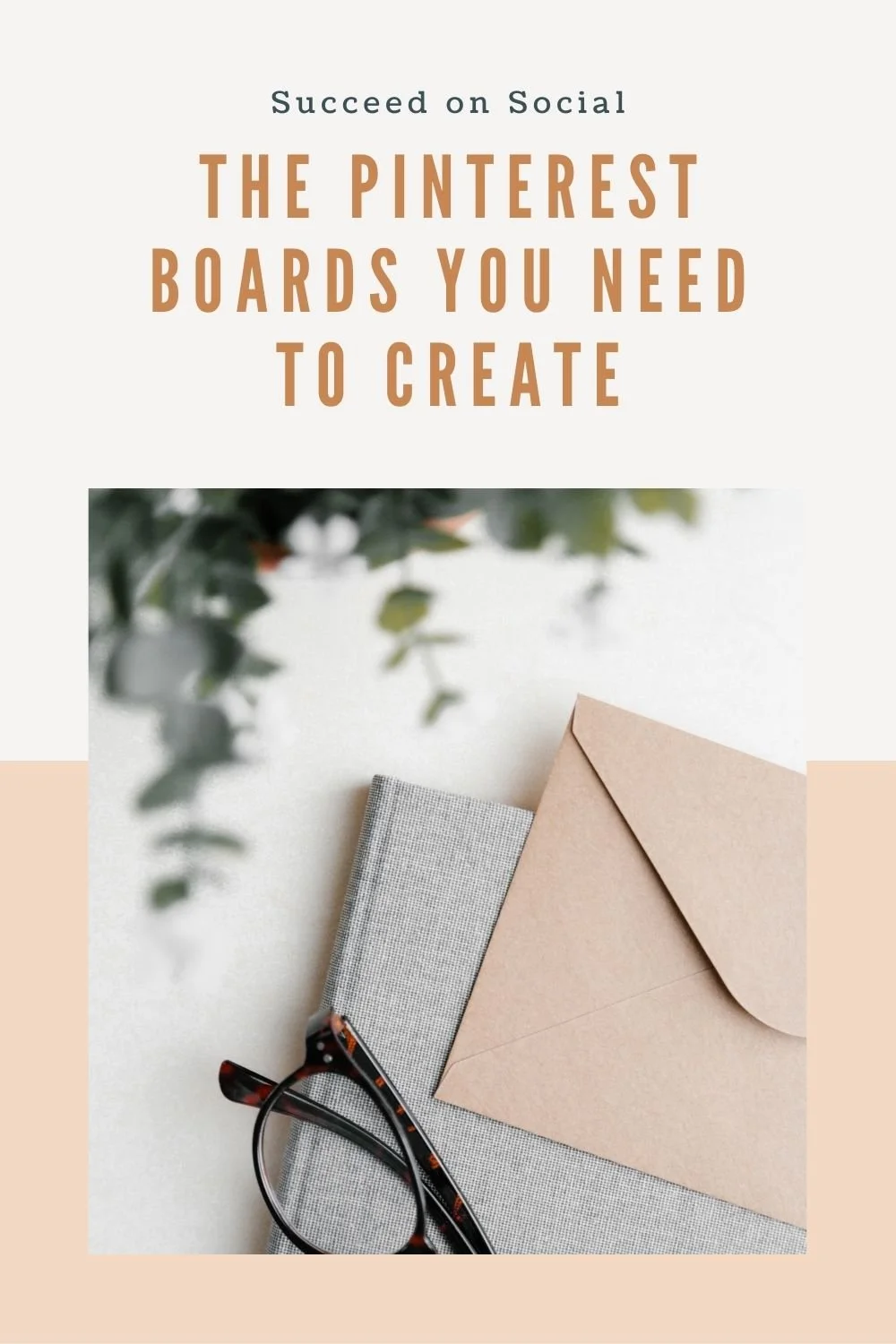The Pinterest Boards You Need to Create
I don’t know about you, but Pinterest makes my organizational heart sing! I love using the platform to collect inspiration and save all my ideas, from shopping to home. But when it comes to business, what is the right approach? In this post, I’m going to share how you can determine what Pinterest boards you should create and how to name them.
What Pinterest boards should I have?
When I first started using Pinterest for my business account, my designer brain immediately started creating boards filled with inspiration for colors, typography, and patterns. This isn’t necessarily problematic but you have to consider the purpose of what you’re pinning. Basically, there’s a difference between inspirational and problem-solving. Let’s walk through a few of the different types of boards you should set up to cover your bases.
A brand board
After all, at the end of the day, we want to use Pinterest to create traffic to our website or Etsy shop. Create a board that is all your brand, whether it’s blog posts or products. When I pin content from my site I always make sure to pin it at least to my brand board and then mix in variations of that pin to other boards. For example, I could pin a Canva blog post to my brand board and then create a variation of that pin to add to my “Canva Tips” board. One of the reasons that this is so important is because if someone resonates with your content on your page, they’ll want more of it! Your job is just to make it easy for them to find.
A board for each category/area of your business
This applies to whether you have a blog or a product line. For this category, your goal is to become an authority in the category of the topic or item. The easiest way to figure out what these boards should be is by looking at the categories on your blog and creating a board for each one. Be sure to mix in high-quality pins from other sources, too. If you have a product line, let’s use jewelry as an example. You could create boards for each type of product you make: necklaces, earrings, and bracelets.
Boards that meet your audience’s needs or answer your questions
This is the big idea of this article. Put yourself in the shoes of your target audience. What questions do they have? What are they looking for? If we use the jewelry example again they might be looking for things like:
How to care for jewelry
How to style jewelry
Best jewelry for different skin tones
How to layer jewelry
From this list you could create boards like “Jewelry Storage & Care,” “How to Style Jewelry,” and “How to Choose Jewelry”
If you’re a blogger or service-based business, consider the types of resources your audience is looking for. Ask yourself things like:
What are they looking for? Templates? Shortcuts?
What might they be searching for an answer to? Think of tools they might be using or hurdles they might be facing in their business.
How can you save them time? For example, keyword shortcuts, time saving hacks, and productivity tools.
The main goal of your Pinterest is to serve your audience, so if you take one thing away from this article it should be to always put yourself in the target audience’s shoes. I find that if you’re an expert in your area, it can be difficult to take a step ______
How should I name my Pinterest boards?
Use keywords
Using great keywords to name your Pinterest boards is one of the most important things. Think about it this way: you have an amazing idea, but the keywords you use could be preventing it from getting in front of your audience. To help bridge this gap, you can use keyword tools like Ubersuggest or the classic method of typing into the Google or Pinterest search bar with your main topic and seeing what comes up as a suggested search. I personally like the extra data that comes with keyword researching tools more because it can tell you how much competition and searches there are for the topics you’re researching.
Be specific and recognizable
While it’s nice to be creative, save that energy for your marketing materials and new business ideas. When naming Pinterest boards avoid any language that’s specific to your industry that an outsider might not recognize. Also avoid using unnecessary words that don’t help your SEO. For example, instead of saying “Cute Birthday Ideas” you could say “Princess Birthday Party Ideas.” The image preview of the images on the board will communicate “cute” without actually having to say that in your title.
Provide detail
Pinterest boards are like categories, but if you are too broad it can be easy for someone to scroll right by if they’re not sure you have what they’re looking for. When you name your boards, be specific. If it’s a board about business, for example, what is that board actually about? Is it business tips? Business templates? Business resources? You can see how even adding one extra word can totally change the type of audience it can attract.
If you liked this post, save it for later!
I hope you found this post helpful! If you liked this article, save it for later by pinning one of the images below. I can’t wait to see what you create!


